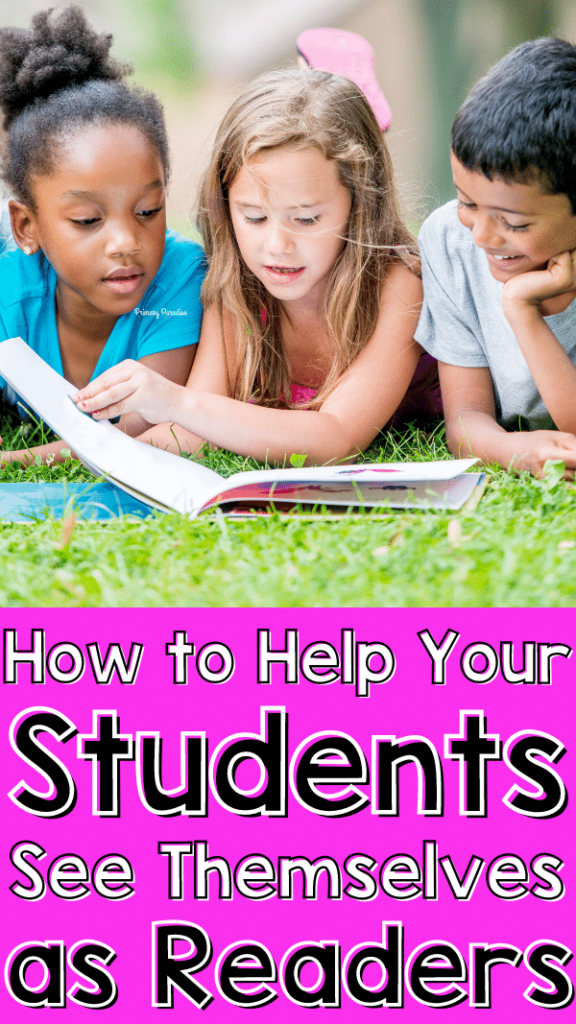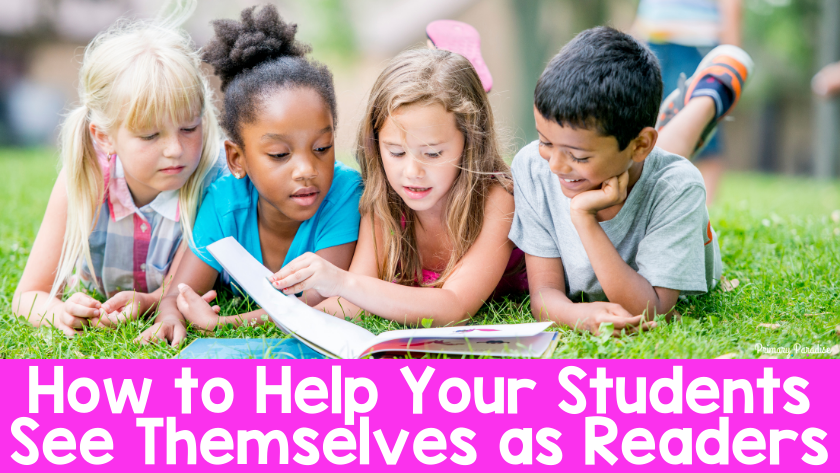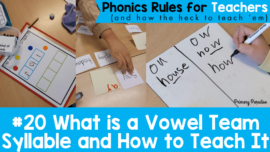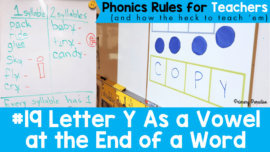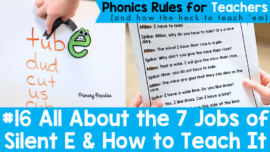Reading is important. In order to function in society, our students need to be able to read. Being a reader also brings enjoyment into our students lives. Here are 5 ways to help students see themselves as readers and boost student reading confidence.
Why do our students need to see themselves as readers?
I’ve written before about the importance of students seeing themselves as writers, but today I want to focus on why students need to see themselves as readers. It’s actually pretty simple. Besides the fact that strong reading skills are integral for our students to navigate the world and become productive members of society, seeing themselves as readers creates other benefits. Confident readers will be more successful readers. Let’s look at why.
Confident readers will read more.
First, students who see themselves as readers will read more. If you see yourself as a runner, you’re going to run. If you see yourself as a singer, you’re going to sing. Likewise, if your students see themselves as readers, they’ll read!
Confident readers will enjoy reading more.
Second, students who see themselves as readers are more likely to enjoy reading. If students take pleasure in reading, it will lead to, you guessed it, more reading!
Confident readers will take more risks.
And finally, students who see themselves as readers are more likely to take risks when choosing books. They might be more willing to try new genres or pick up a book that’s a higher level than they usually read.
How to boost student reading confidence
So, know that we can agree that there are huge benefits to students seeing themselves as readers, how do we make it happen? Here are some simple ways you can boost your students’ reading confidence.
1. Give them access to a wide variety of books
It can take a lot of time and effort to build up a classroom library, but it’s well worth it if you can. The more books students are exposed to, the more likely they are to find something they love. I like to refer to some books as “gateway books”, as in, sometimes it takes finding the right book, or type of book, for children to realize how fun reading is. Once they find something they like, it can lead to trying more books.
Expose your students to as many topics, genres, and styles of books as possible. And, use as many types of books as mentor texts and read alouds as you can. Some of my favorite types of books to get students excited about reading are wordless picture books, comic books, graphic novels, non-fiction books (kids really love non-fiction!), audiobooks, and choose your own adventure books. Be sure not to disparage any type of book. A graphic novel is just as “real” of a book as a 200 page chapter book with no pictures. Comic books and wordless picture books are beneficial and have immense value.
2. Normalize reading books on any level
Most likely you’re required to use Fountas and Pinnell, DRA, or something similar to assess your students’ reading level. However, that does not mean that students can only read books on that level. I know some school districts require this (I taught briefly in one), and it really does not follow any of the research about reading.
Instead, normalize and celebrate students reading books on any level. Does it hurt a student to read a book that’s too easy? No! Do you check the reading level of a novel before you read it? Of course not. In fact, when I taught first grade, some of my students’ favorite books were board books. They were fun! They enjoyed reading them, so why not! Would I let a fifth grader do a book report on Goodnight Gorilla? No, probably not. But, it doesn’t mean they couldn’t read it for please.
On the flip side, give students the change to read books that are “above” their reading level. Just because it’s technically above their reading level doesn’t mean they won’t be able to read it and enjoy it. A lot of their ability to enjoy a book might depend on background knowledge. A student who loves mindcraft could likely read a book 2-3 levels above where they are if it was a book related to minecraft. On the flip side, a student who knows nothing about farming might struggle with a below level book on the subject.
Instead of stressing about the level, teach students that it’s okay to give any book a try. If a book feels boring, they can pick up something else. When students are really struggling with comprehending what they’re reading, they can pick something else. If students know that there’s nothing wrong with abandoning a book, they won’t feel as much pressure in their book choices. Less pressure is always a good thing!
3. Take time to read for pleasure
You have a LOT that you need to do with your class each day, so I know adding one more thing might seem like too much. However, taking even 5 minutes to read to and with your class just for fun can make a world of difference. After my students come back from lunch and recess is my favorite time to sneak in some fun reading. Students tend to need a few minutes to get settled anyway, and 5-10 minutes of listening to a chapter book often does the trick. If you have a few minutes after packing up to leave, you can also sneak in some just for fun reading.
4. Allow students to help organize your classroom library
This one can be hard for some teachers, but it can also make the world of difference. At the beginning of the school year, instead of having your library completely ready to go, you can have students help you decide how to group the books. Although it will take class time, it also serves a few great purposes.
- It let’s students see all of the books you have. This will give them a chance to touch and see and maybe even flip through the books in your library.
- They’ll know where books are. This will make it easier for them to find books on their own. How wonderful if students can find books on the topics they need on their own.
- It will make the books feel like their books. This is helpful for two reasons. First, they’ll hopefully take ownership, and better care, of the books. And secondly, they will feel comfortable reading and using them.
Logistically this can be hard, but that doesn’t mean it’s not worth a try. And, if you’re not ready to let them help with the whole library, you can also give students a small section to be in charge of.
5. Model a passion for reading
This one is another simple one. Show students that you also have a passion for reading. You can do this in simple ways like mentioning books you’re reading, having a book you’re reading visible on your desk, or even reading your own book when students are independently reading some of the time.
In my last school, my principal asked me to make a sign for all of the teachers and students to hang outside of their hallway. It had a spot for the person’s name and then it said “currently reading”. We placed them in plastic sleeves and wrote on them with a dry erase marker. Teachers and students alike could write what they were currently reading. The students absolutely loved it, and so did the teachers. I found many great books to try after walking through the hallways to see what other teachers were reading. Even the custodial staff and office staff had one. It really created an environment of reading and students felt confident that if so and so read a certain book, they could try it too!
Showing our students how awesome reading is will help them see themselves as readers. This will create confident readers. And, students who feel confident and read for fun will also be stronger readers overall.
Keep reading:
- Sight Word Practice that Will Make Students Smile
- Free At Home Reading Support Guide for Parents
- Children’s Books the World Needs Right Now
- Why Audiobooks Are Real Books
